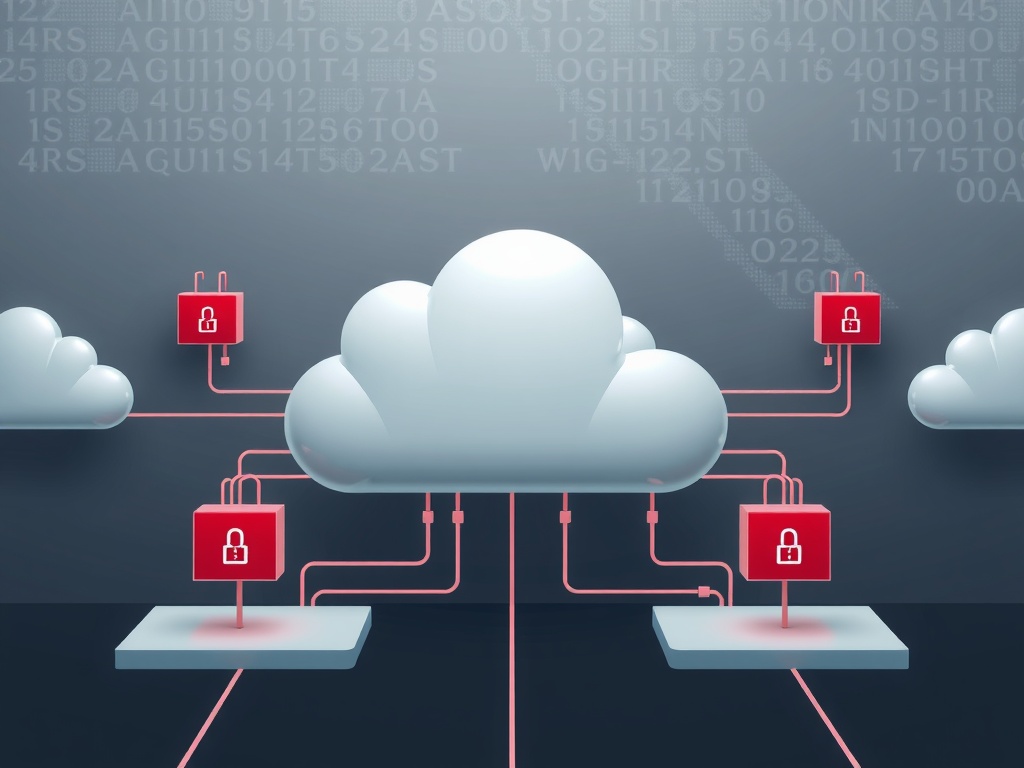In 2025, cloud data security is more important than ever. Whether you're a small business or a large organization, adopting cloud security best practices is essential to protect your sensitive information. Discover the 10 cloud security best practices you can't miss to ensure the security and confidentiality of your data in an increasingly digital environment.
Regular system updates and patches

In today's digital world, data security is crucial. Regular system updates and patches are part of best practices in Cloud Security to be adopted by 2025. This ensures that your infrastructure is protected against known vulnerabilities and emerging threats.
Outdated software can become an easy target for cyberattacks. By implementing a regular update policy, you can strengthen your system's security. This includes operating systems, applications, and even device firmware.
Scheduling these updates is essential. You can set a monthly or quarterly routine, depending on the criticality of your infrastructure. Also, consider testing updates in a staging environment before deploying them to production.
Finally, document each update. This will allow you to track the changes made and assess the impact on your architecture. By following these tips, you will contribute to the application of best practices in Cloud Security in your company.
Continuous monitoring and threat analysis

In today's digital landscape, continuous monitoring is essential to ensure the security of your cloud data. This practice helps quickly identify potential threats before they cause damage. Adopting sophisticated analytics tools that provide real-time alerts is crucial for 2025.
There are several effective methods to enhance security, for example:
- Implement intrusion detection systems that analyze network traffic in real time.
- Using artificial intelligence to anticipate suspicious behavior and prevent attacks.
- Train staff to recognize the signs of a potential threat, so they can react quickly.
These measures are part of cloud security best practices. By keeping a watchful eye on cloud activity, businesses can better protect their sensitive information.
By integrating continuous monitoring solutions, you ensure your system remains resilient against emerging threats. This not only helps you prevent incidents, but also builds trust with your customers. In 2025, cloud security will not only be an option, but a necessity, and following these cloud security best practices is a good start.
Employee training and awareness

Cloud data security is a major concern for many businesses today. Employee training and awareness play a crucial role in this context. In 2025, it's essential to integrate these practices into corporate culture. This includes regular training sessions on cloud security best practices.
Employees need to understand the potential risks associated with using cloud services. They also need to know how to protect sensitive data. Offering interactive workshops can make learning more engaging and effective.
Another important aspect is keeping your knowledge up to date. Threats are constantly evolving, and it's important to keep employees informed of the latest security trends. This can be achieved through newsletters or specialized seminars.
Finally, it's helpful to encourage a culture of information sharing. Employees should feel comfortable reporting anomalies or suspicious behavior. This helps create a safer work environment and enforce cloud security best practices.
Identity and Access Management

Identity and access management is essential to ensuring data security in the cloud. With the rise of online threats, it's crucial to adopt cloud security best practices to prevent sensitive information from being compromised.
A good identity management strategy starts with multi-factor authentication. This adds an extra layer of security by requiring users to verify their identity through multiple means, such as a password and a code sent to their phone.
Next, it's important to ensure that access is limited. Each user should only have access to the data needed to complete their tasks. This reduces the risk of errors or misuse.
Additionally, it is recommended to regularly audit user permissions. This ensures that only authorized individuals have access to critical information.
Finally, don't forget to train your employees on cloud security best practices. Raising awareness of potential threats and protection methods is key to maintaining a secure environment.
Network segmentation and access control

Network segmentation is one of the best practices in Cloud Security that every business should adopt. By dividing your network into segments, you limit access to sensitive data, reducing the risk of information leaks. Each segment can be protected with specific access controls, ensuring that only authorized individuals can access it.
Access control strengthens this security. This means you must determine which of your employees or partners has access to which network segment. Using unique identifiers and appropriate authorization levels is essential in this process.
Here are some key points to consider:
- Risk analysis :Before segmenting, assess the risks associated with each segment.
- Access policies:Establish clear rules about who can access what.
- Continuous monitoring :Implement tools to monitor activities in each segment.
- Employee training:Educate your team on the importance of security and best practices.
By integrating these strategies segmentation and access control, you are getting closer to best practices in Cloud Security, thus protecting your data more effectively.
Data encryption at rest and in transit

Data encryption is one of the best practices in Cloud Security to be adopted in 2025. This is an essential method for protecting sensitive information, whether in storage or in transit.
When data is at rest, it is stored on servers or disks. Encryption ensures that even if someone accesses this data, it will remain unreadable without the proper key. This is a crucial protection against data breaches.
When it comes to data in transit, encryption is equally important. This means that when data is sent from one location to another, such as between a user and a server, the data is encrypted. This prevents attackers from intercepting and reading the information during its transfer.
To implement encryption effectively, here are some tips:
- Use secure protocols: Make sure to use protocols like HTTPS or TLS for data transfer.
- Choose robust algorithms: Select encryption algorithms that are known for their security, such as AES.
- Measuring compliance: Ensure your encryption methods meet relevant compliance standards.
- Train your teams: Educate your staff on the importance of encryption and best practices in Cloud Security.
By adopting these encryption practices, you strengthen the security of your cloud environment and protect your data more effectively.
Regular backups and restoration tests

One of the best practices in Cloud Security is the implementation of regular backups. This means that all your data must be backed up at regular intervals to avoid any loss in the event of a problem.
It's also crucial to do more than just backup. Regularly test your restores to ensure data can be easily recovered if needed. A restore test helps you verify that your backups are working properly.
Consider automating these backups if possible. This ensures that you never forget to perform a backup, which is one of the best practices in Cloud Security.
Finally, document your backup and recovery processes. This will make things easier for your team in the event of an emergency. Clear documentation is essential for the security of your data.
Regular evaluation of cloud service providers

In today's digital landscape, regularly evaluating cloud service providers is crucial to ensuring the security of your data. In 2025, businesses must integrate this practice into their security strategies.
Cloud security best practices include constant monitoring of vendor performance and compliance. This includes reviewing security certifications, conducting regular audits, and ensuring transparent policies. data protection.
Additionally, it is essential to ensure that the supplier complies with current standards and regulations. This helps minimize information security risks.
Here are some steps to follow for an effective assessment:
- Check your supplier's certificates of conformity.
- Evaluate the security protocols in place.
- Request reports on past security incidents.
- Engage in regular discussions to address security concerns.
By integrating regular vendor assessment into your strategy, you align your practices with Cloud Security best practices, thereby strengthening the protection of your digital assets.
Well-defined incident response plan

In cloud security, having a well-defined incident response plan is crucial. It's one of the cloud security best practices to adopt in 2025. Such a plan allows you to respond quickly and effectively in the event of an issue.
It's important to prepare for various scenarios, whether it's data breaches or service outages. Clearly defining the roles and responsibilities of each team member ensures a coordinated and organized response.
Another key aspect is communication. Ensure all stakeholders, both internal and external, are informed according to an established protocol. This helps maintain trust and transparency during a crisis.
Finally, don't forget to include regular drills in your plan. These simulations allow you to test and adjust your procedures, ensuring your team is ready to act when necessary. By incorporating these elements into your strategy, you'll align with cloud security best practices.
Audit and compliance of security policies

In the cloud world, auditing and compliance are essential to ensure data security. One of the best practices in Cloud Security involves conducting regular audits of security policies. This helps identify vulnerabilities and ensure that security standards are met.
Establishing an audit schedule is crucial. This can be annual, semi-annual, or quarterly, depending on the size of the organization and the sensitivity of the data being processed. An effective audit should cover all aspects of security, including access management, data encryption, and incident response.
Additionally, documentation is a key aspect of audits. All security policies should be clearly written and accessible. This not only facilitates the audit process, but also aids in employee training on the best practices in Cloud Security.
Finally, it's important to conduct compliance testing. This can include penetration testing and vulnerability scans. These tests verify that the security measures in place are effective and comply with current standards.
